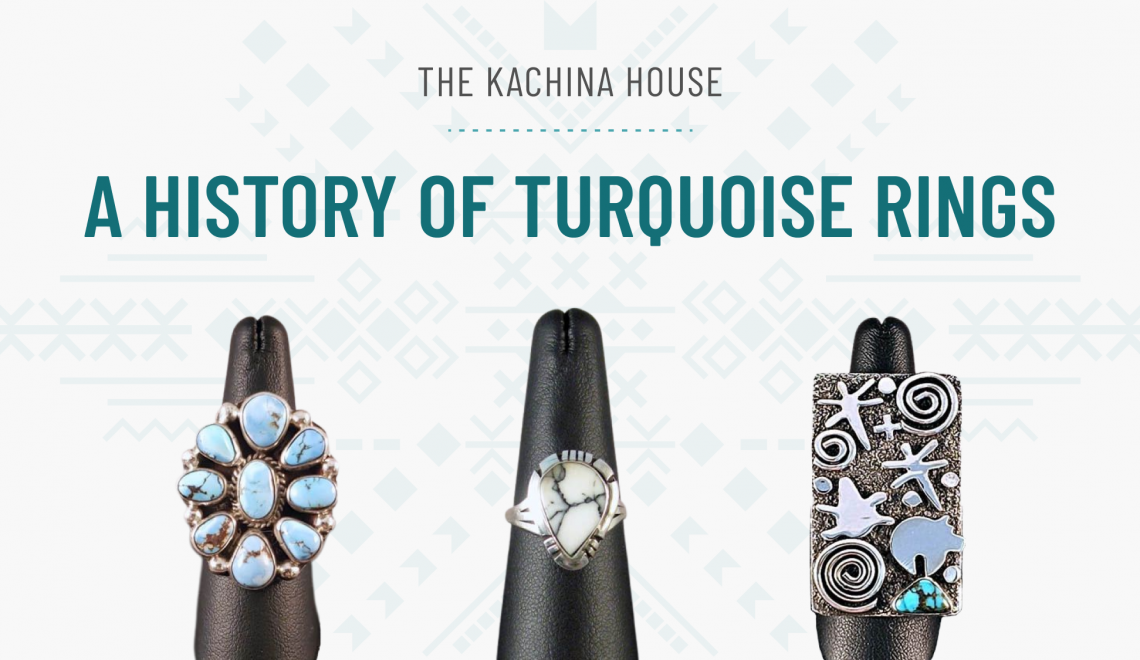
Turquoise, with its distinctive allure, has captured hearts for centuries. What gives it that mesmerizing green-blue palette? Its coloration is a result of the intricate dance between copper, aluminum, and phosphate, creating a visual symphony that has left many in awe throughout history. Mined from various corners of the world, including the United States, Mexico, Iran, and China, turquoise carries with it the essence of the earth, water, and sky, making it a truly unique gem.
What Does a Turquoise Ring Symbolize?
A turquoise ring, beyond its intrinsic beauty, carries profound symbolism deeply rooted in Native American culture. It represents a harmonious connection between the wearer and the natural world, with turquoise being regarded as a sacred stone embodying the elements of earth and sky. In Native American beliefs, turquoise is often seen as a protective talisman, bringing good fortune and safeguarding against negative energies. The significance of the ring as a gift amplifies its symbolic weight, signifying not just adornment but a meaningful bond between individuals. Moreover, turquoise rings are seen as conduits for spiritual energy, fostering a sense of balance and well being. As you adorn yourself with a turquoise ring, you carry a piece of history, tradition, and positive energy—a timeless symbol of interconnectedness with nature and the enduring legacy of Native American craftsmanship.
A History of Turquoise Rings in Native American Culture
The evolution of Native American rings is fascinating. Early renditions, crafted from natural materials like wood, shell, stone, and bone, were plain, simple bands. The arrival of European metalsmithing techniques ushered in a new era, with rings crafted from brass, copper, iron, and silver. By 1890, intricate details like engraving, carving, and the iconic bezel setting for stones became hallmark elements of southwest Native American-made rings.
These rings, adorning the fingers of tourists, collectors, and tribal members, became cherished symbols of artistry. The affordability and wide array of styles created by different artists contributed to their popularity. And, in true Native American fashion, wearing more than one ring became a common practice.
Fast forward to the 1970s and a surge in demand for high-quality, Native American-made rings began. Native American silversmiths, displaying an unparalleled mastery of their craft, began incorporating gold into their creations. Exotic gemstones found a new home in these rings, transforming them into exquisite pieces of fine art.
Navajo silversmiths, known for their impeccable craftsmanship, often create cabochon-set turquoise rings. From simple split-shank designs to those adorned with hand-stamped patterns, appliqué, or repousse work, each piece tells a unique story. Modern interpretations include turquoise inlay rings, turquoise band rings that make for stunning wedding bands or engagement rings.
Turquoise Rings at Kachina House
At Kachina House, we invite you to explore our wide array of Navajo turquoise rings. Our collection is a testament to the enduring legacy of Native American craftsmanship, where tradition and innovation converge to create wearable masterpieces. Join us in celebrating the history, artistry, and timeless allure of turquoise rings that transcend generations. Discover the perfect piece for yourself that resonates with your unique style, or find a turquoise ring to give as a gift to someone special.

